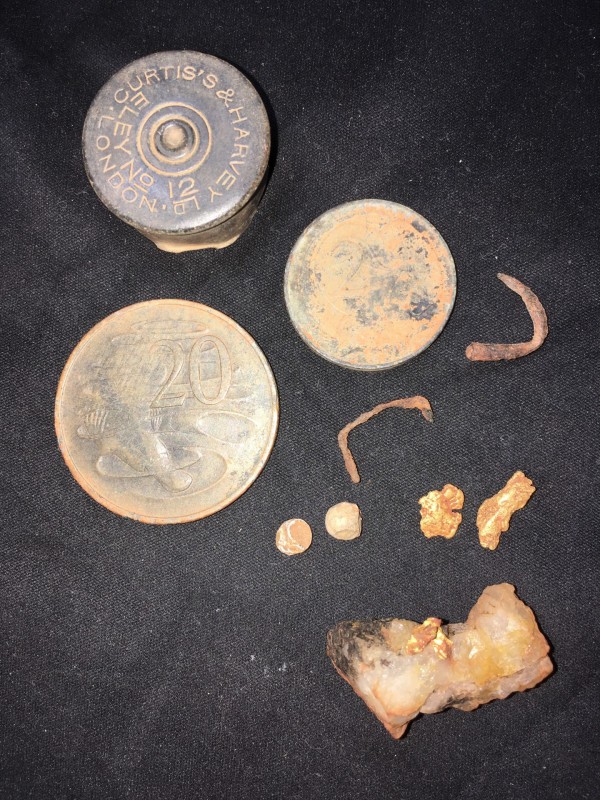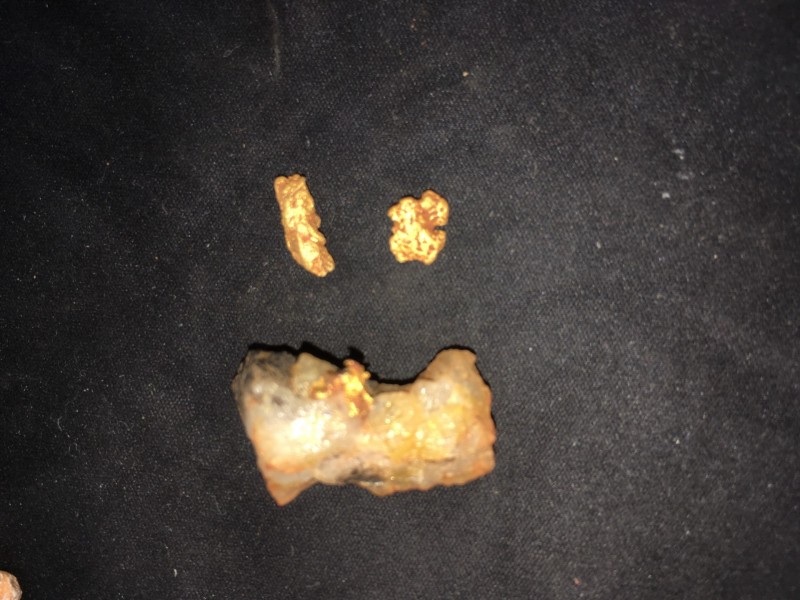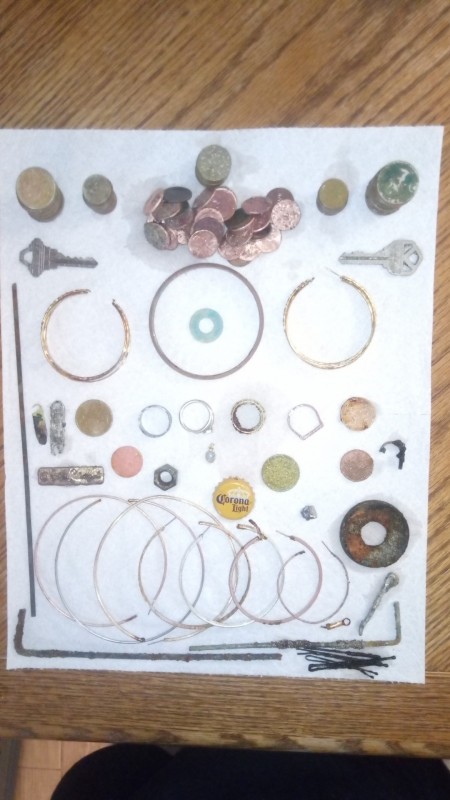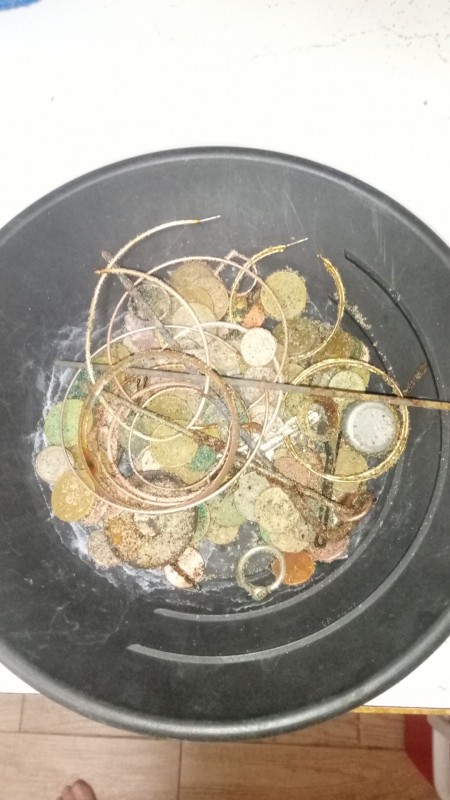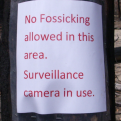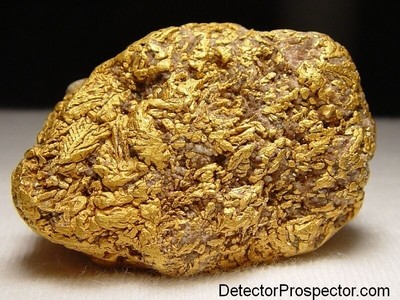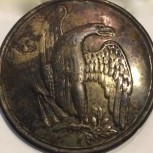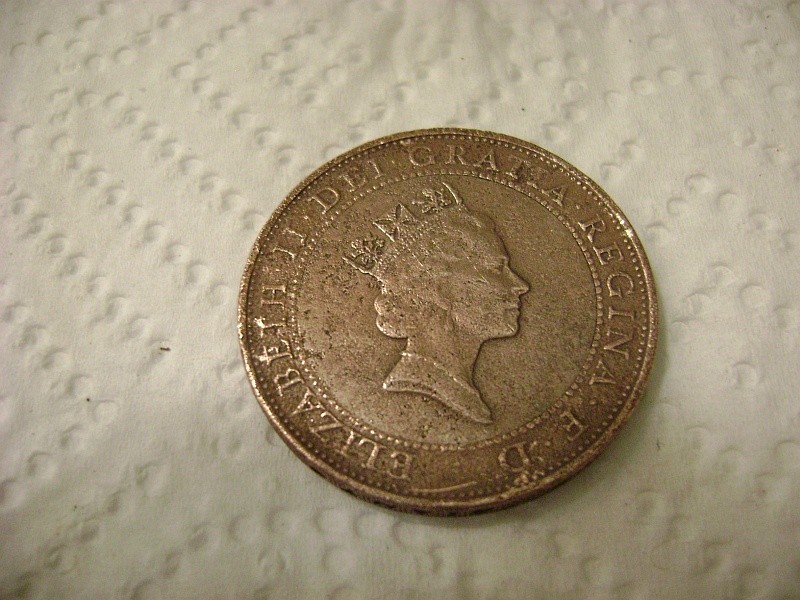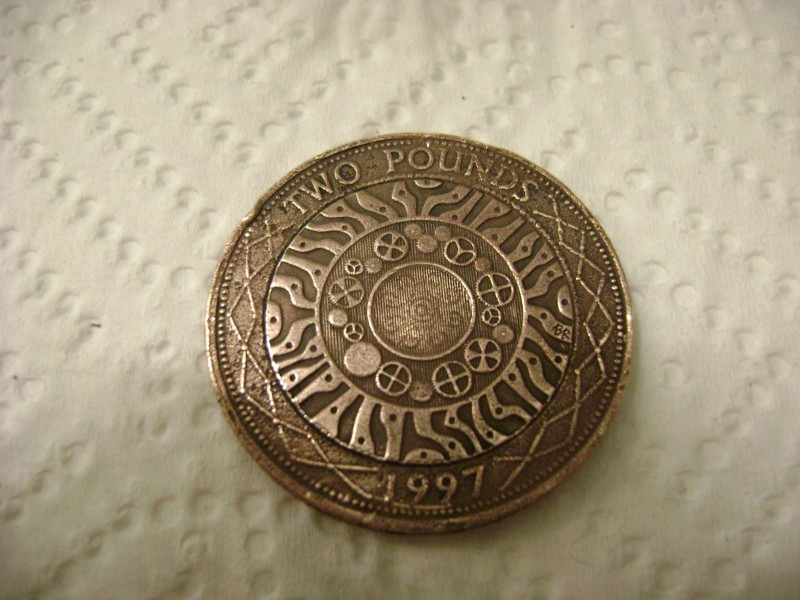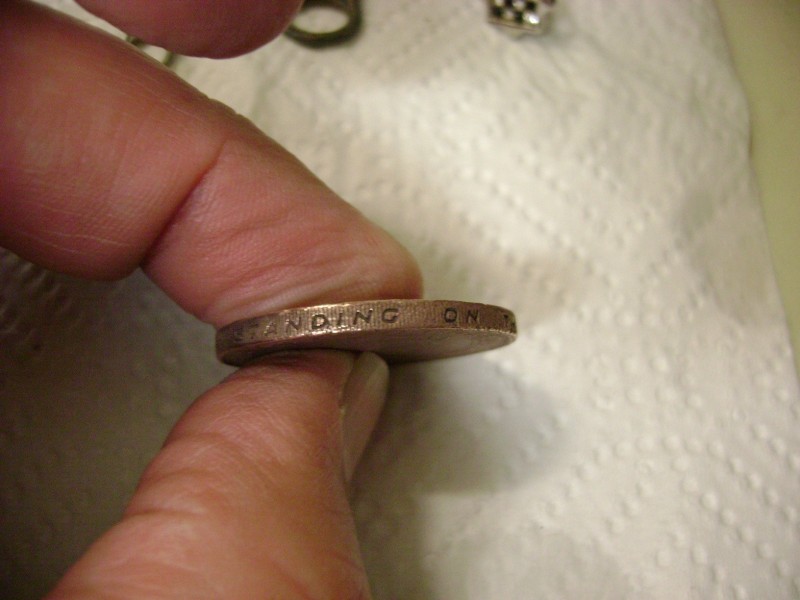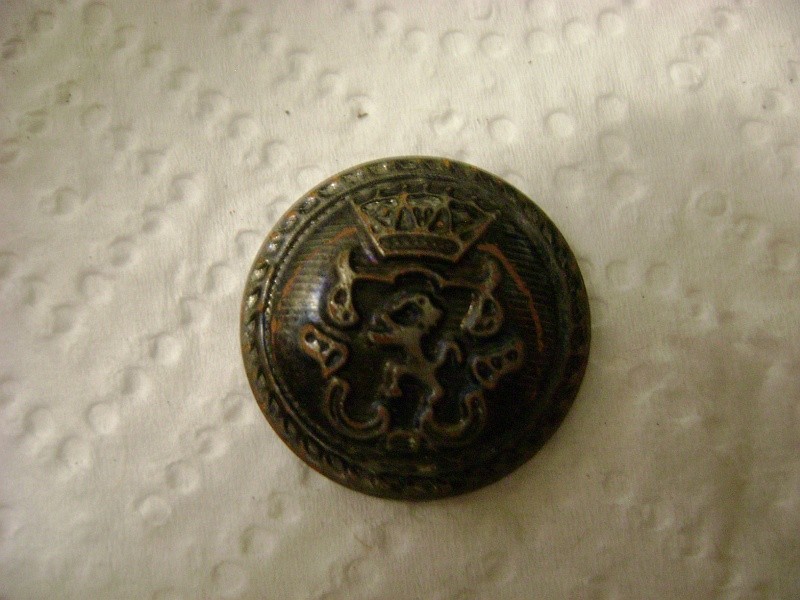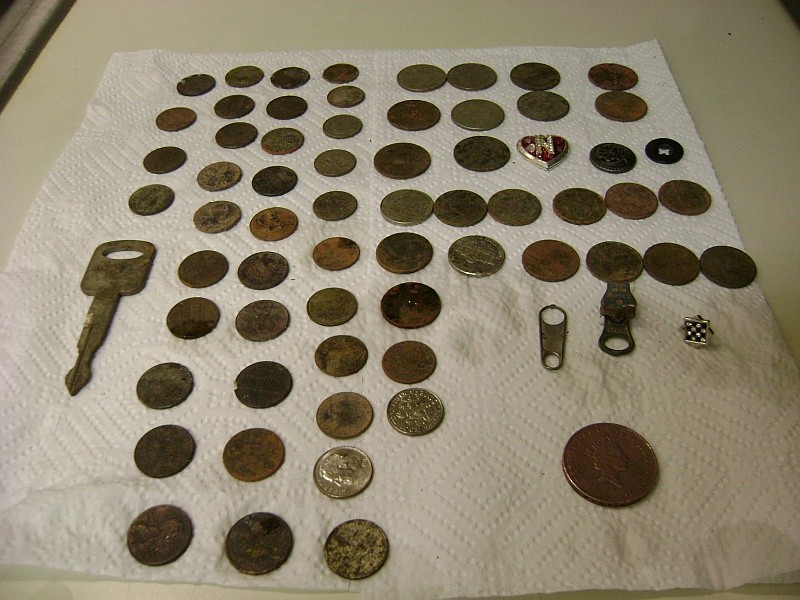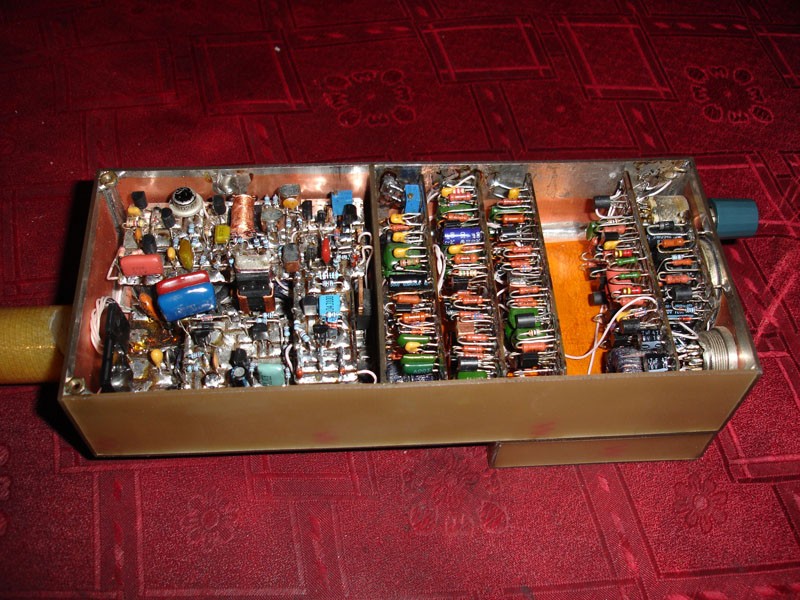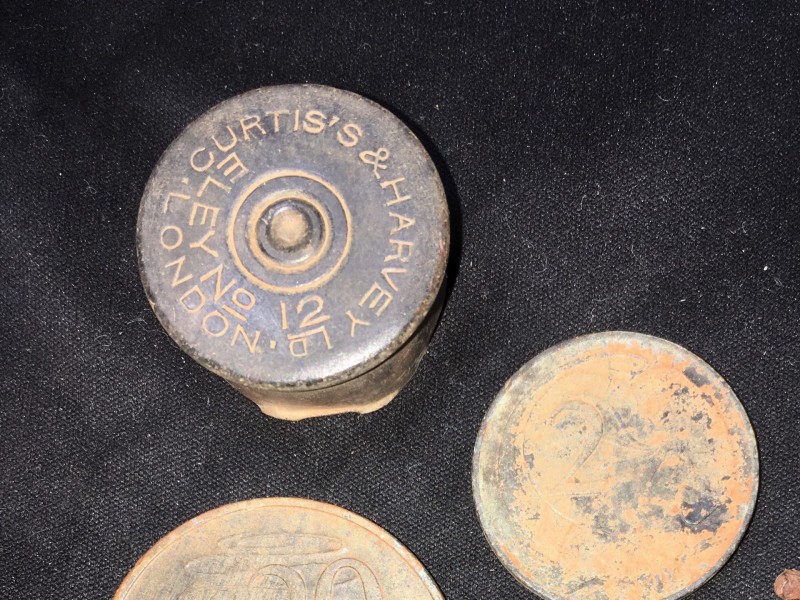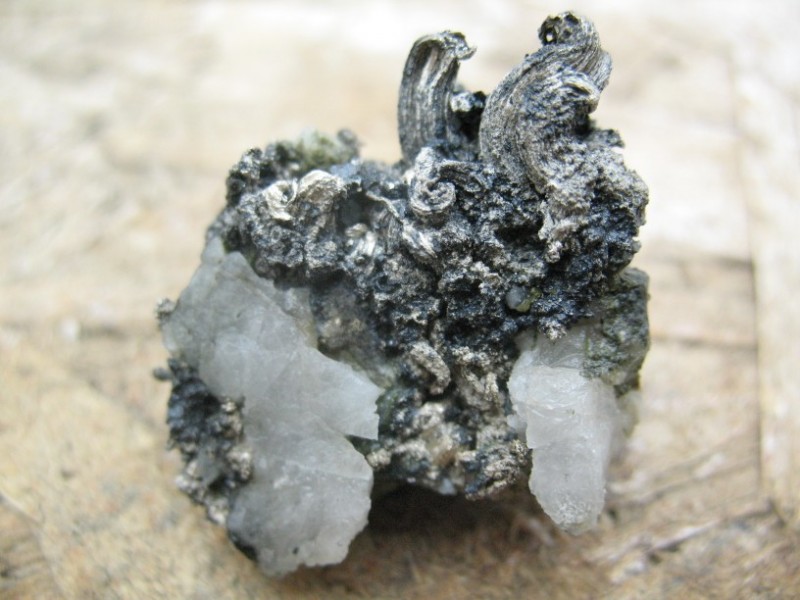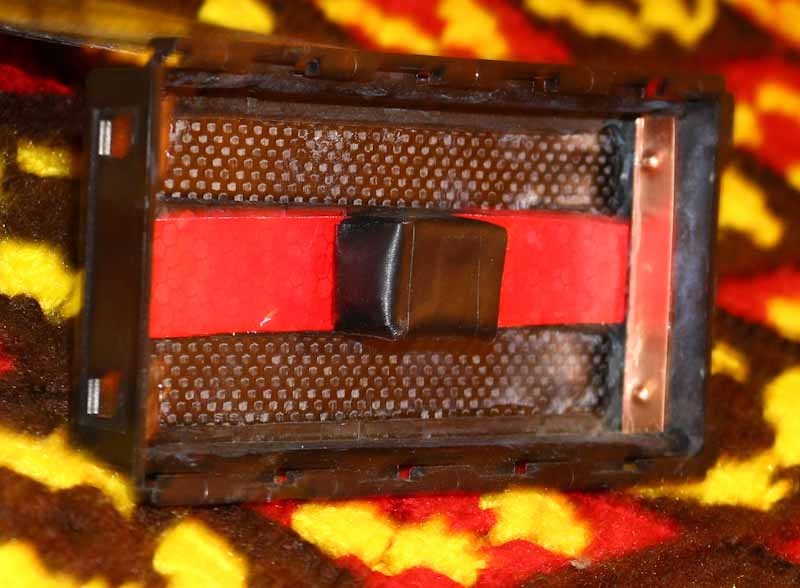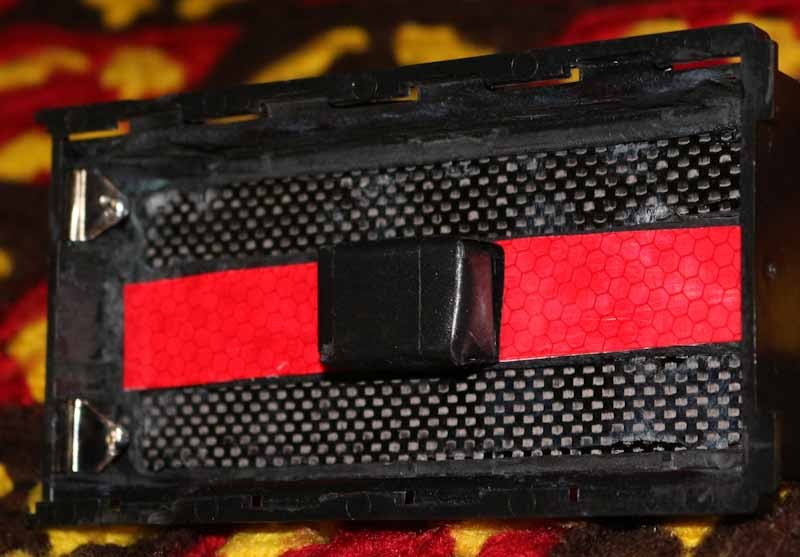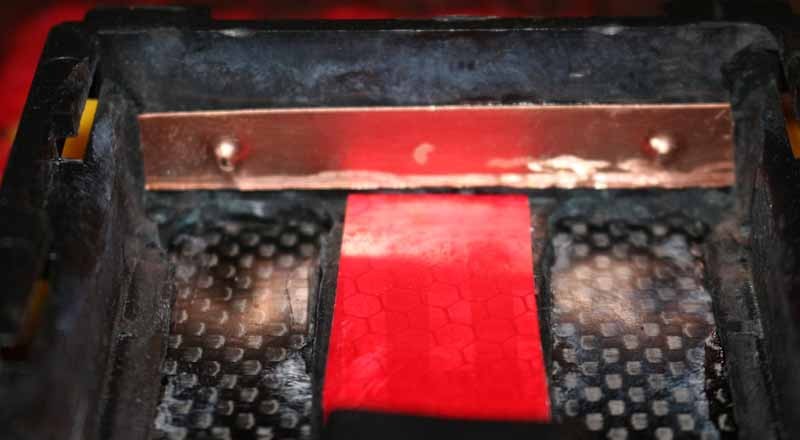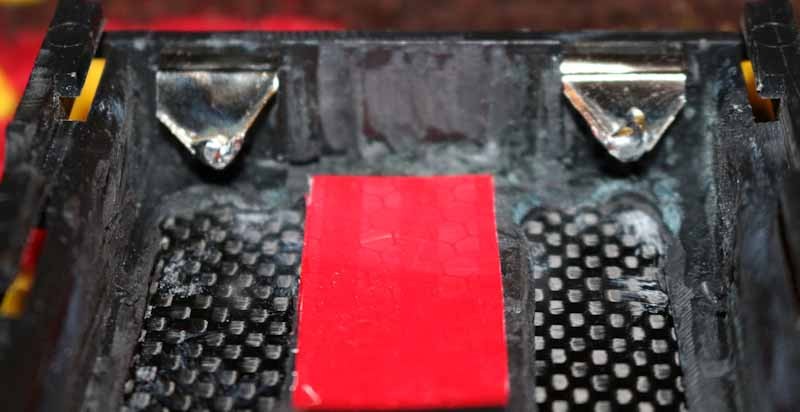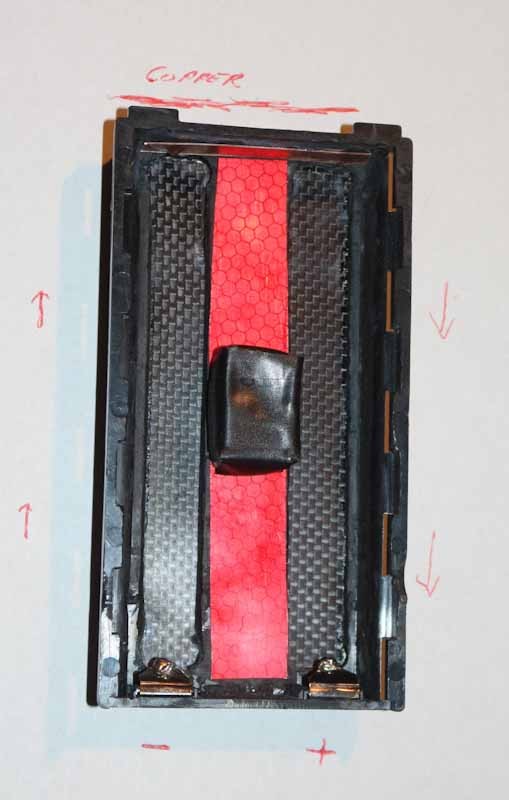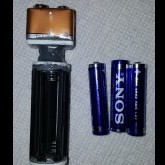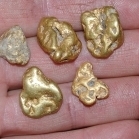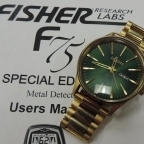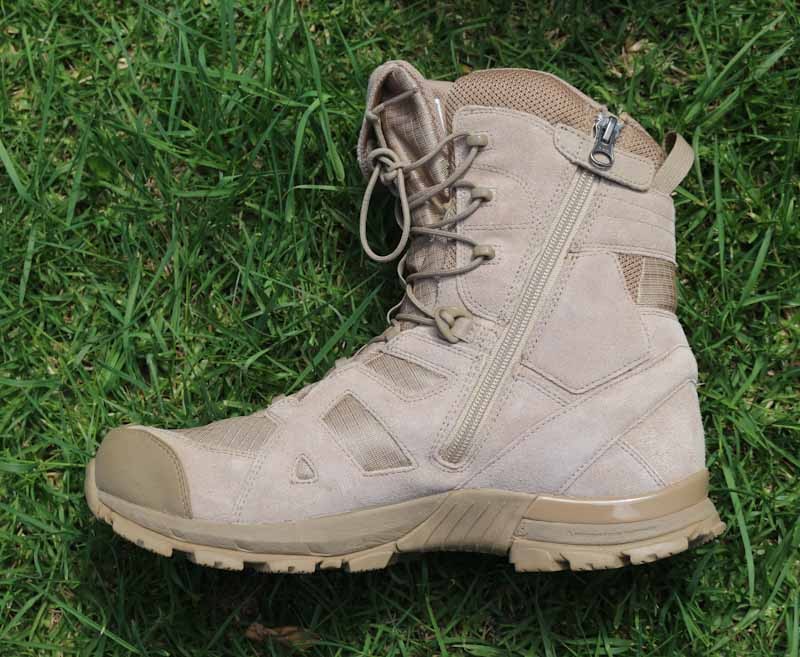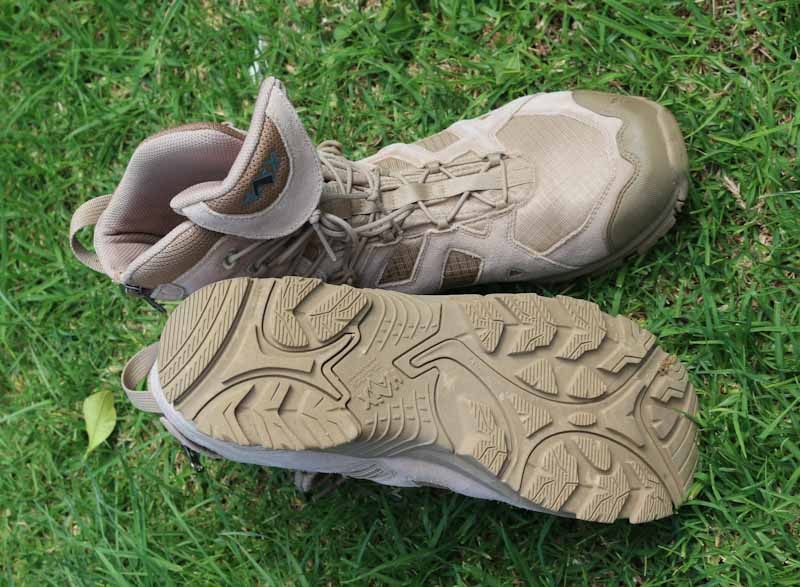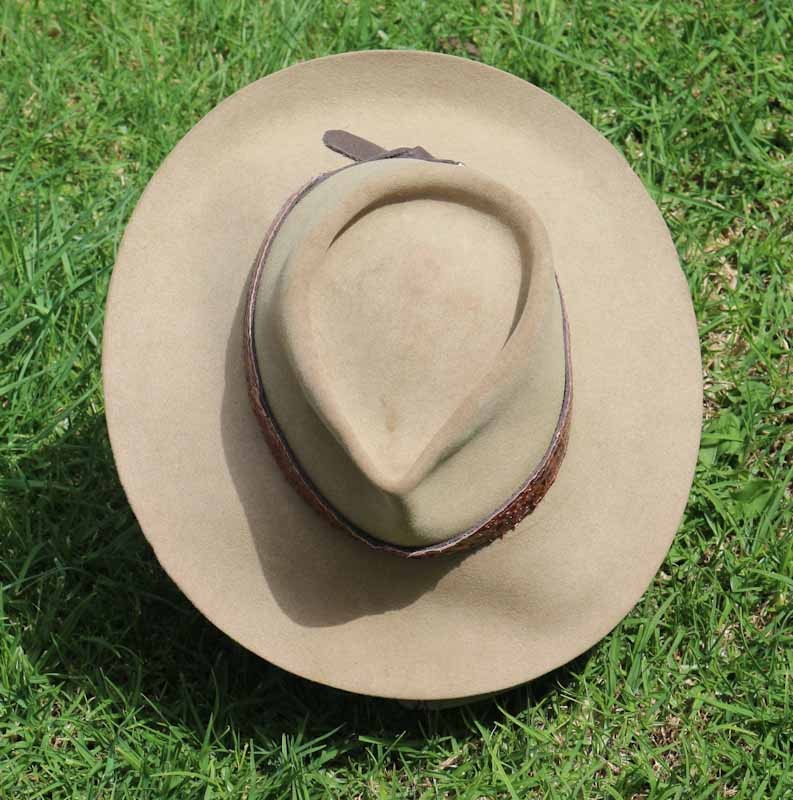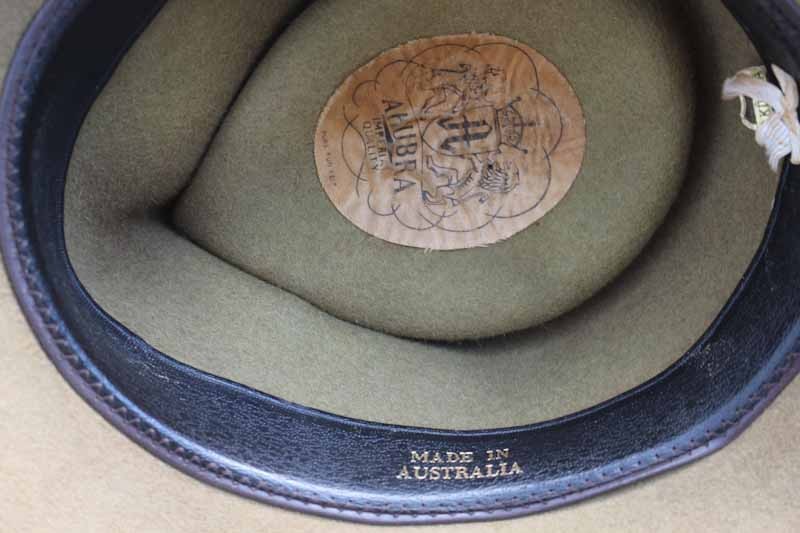Leaderboard
Popular Content
Showing content with the highest reputation on 10/20/2019 in all areas
-
I managed to get away a couple of weeks back for five days to chase some gold. Headed north of Kalgoorlie Western Australia to a spot I've been to before but could only manage a couple of little ones and a specie that was on the surface. Oh and 22 cents! Despite the good stuff being scarce it was great to get out bush. The two nuggets come in at just over a gram, all found with a GPZ 7000.12 points
-
I spent the afternoon at a beach that likes a NW swell. It kinda pushes everything up and out if the waves are under 10 second intervals. I found 10 'hoops' for the afternoon but I worked a bit over 4 hours to get them. One set of hoops is a pair. In addition to the hoops I dug 108 coins and 4 rings. One ring is a 6g .925 that looks a bit like a nail made into a ring. Some of the targets were in the tops of the 3-5 ft waves I was walking in. It was getting near sunset so I had to cut the trip a little short and cherry pick to get my car before it got a ticket.6 points
-
After finding a decent amount of silver on my favorite beach the other day, I had to get out there again. A storm had just passed and I wanted to see if the silver continued in my new area. I had a lot of competition, with 8 other detectorists. But they were all hitting an exposed area like piranhas 😄. I was alone in my area. I used the GPX for this section because I needed the extra depth. I wasn't expecting this good of a day. A total of 34 silver coins, a silver chain, a silver religious medal and a nice 14K gold and ice? cross. I can never seem to get a good shot of anything that sparkles with my waterproof camera. 137 coins for the day. My copper to zinc penny ratio was threw the roof at 62 copper to 2 zinc. That is what a good storm does for you 😊 I won't be able to get back until next week, but I'm hoping I can start where I left off. Fingers crossed.5 points
-
Replacing all my lost images made me realise that I had completely missed posting the 2018 Victorian prospecting trip. I may have posted it here elsewhere but the images there would now be gone. Reg and I scored over an ounce together, mainly from our new goldfield. The three rough bits were detected by Reg Wilson and I on an excursion to a patch of forest way out on the western edge of Victoria's gold bearing zone. The larger 5 gm piece (found first by Reg) got us excited but only had two more small companions. All found with the very latest QED's at the time, which Howard graciously supplied for testing. Most of it came from this shallow lead which begins at the distant low ironstone hill (looking up the lead): - - - and continues on through the far distant treeline onto the next property, which was under crop at the time, and again this year, so not yet done by us: Detail of rough 5 grammer:4 points
-
Our first trip of 2004 to Moore Creek got a lot accomplished, but the big jobs remained ahead. I was contacted by my friend George, better known on the internet forums as seeker. He has a background with heavy equipment and offered to help out with the generator and bulldozer. George is a very accomplished and well traveled detectorist and this trip would give him a chance to try out his brand new Minelab GP 3000. And so we scheduled a another trip up to the mine. Our first attempt was aborted at Rainy Pass due to bad weather. It was some of the poorest flying conditions I have experienced in some time. We sat and drank coffee in Skwentna hoping for the weather to lift, but it never did. This is one of the frustrations of flying in Alaska that one faces from time to time. There is nothing much to be done about it but try again in the future. But the false starts are disappointing and you never get back the lost time. Yet another trip was scheduled for a couple weeks later, and this time we made it. My brother Tom was able to break away from work for this short weekend trip, and so it was my father, George, Tom, and I. This time the weather was better and so we made it into the mine with no problem. Then came the usual task of hauling our gear to camp and opening the place up. Every time we leave we have to try and “bear-proof” the place by covering all the doors and windows with steel. Every time we return we have to open everything back up. I want to make some heavy-duty hinged steel doors for covers to speed this process up. For now it is lots of work with hammer and nails. George took a look at the generator and after a bit of work with the fuel system got it going. The previous owners had rigged it to auto feed with a fuel pump out of a barrel. George hooked the original fuel tank back up and bled the fuel system and it finally fired up. We now had electricity to add to our propane stove and propane refrigerator/freezer amenities. Suddenly Moore Creek was starting to feel civilized; the microwave even worked! Aerial view of Alaska Range on way from Anchorage to Moore Creek Arrival days are always short days. We decided to look for a little gold. I gave Tom my Minelab GP 3000 and I tried the White’s MXT I had brought along just to see how it worked in the hot rocks. George had his new GP 3000 and my father his Tesoro Lobo. It was a bit of fun at the end of the day, but only Tom came up with gold, a nice 0.55 oz specimen. Tom has always had a knack for detecting although he has done relatively little detecting over the years. It must run in the family. The next day we got more serious. George wanted to try and start the old D9-18A bulldozer that we have sitting in camp. This unit had been sitting next to the trail going from the airstrip to the cabins during all those early years when we had made visits to Moore Creek. It apparently was abandoned as dead but in the last couple years the previous owner had finally got it running. A piston was replaced and they got a little trail work done before the unit started shaking badly again. They thought it might have a bent crankshaft, which would be bad news. Still, it was running when it was parked, so we figured we might as well try and get it started to see how bad it was. The fact that it is parked in camp makes it easier to work on than the one located over four miles by trail out of camp. These old bulldozers have a small gasoline engine referred to as a “pony motor” that acts as a starter for the main diesel engine. The first thing to be done is to get the pony motor running. They use a six volt battery instead of a twelve volt to run their own little electric starter motor. We hooked up a battery with a charge and determined the starter worked. We then checked for fuel… and there was none to the carburetor. It turned out the fuel line from the little gas tank to the pony motor was plugged up with rust particles. The line was so well plugged it was hard to believe they had used the pony motor to start the dozer. Nothing all that hard to fix but time consuming taking all the lines apart, cleaning them out, and reassembling everything, especially since many of the fittings were stripped or otherwise in poor condition. D9-18A bulldozer in camp The throttle controls were disconnected from the pony motor, so George sat up top and ran the starter while I worked the choke and throttle manually. The pony motor started and I immediately wished I had hearing protection on. That little motor was loud. It also became immediately apparent we had a coolant leak in the head. But it did not look too bad for a short try, and so George kicked in the clutch and turned over the big diesel. It cranked and my brother shot some starter fluid in the air intakes while I kept working the pony motor throttle. The big motor turned and we got some smoke puffing. It looked ready to start. So we backed off. We wanted to let the pony motor cool down as the short effort had it pretty hot. We also looked the big motor over and checked for coolant and found none. Off to the creek with buckets we went. We dumped the water into the system, and it promptly ran right back out of the bottom of the radiator. Well, we looked but the radiator is fairly well enclosed. We think there is a drain open or hose pulled. We sure hope so, and that the radiator is not cracked. I have to believe they drained it before walking away. We were tired of fighting with the unit, and decided a set of manuals would be very helpful at this point. The dozer seemed like we could start it, but I had no desire to hurt things more by running the unit without better information about the recommended oils, coolants, etc. We decided to round up manuals before making another try at starting the dozer so we could run the unit through a full pre-start checklist. And find out where that drain is. My father and I figured to start trail work up to the other bulldozer outside of camp and it was decided that George and Tom should go hunt for gold. It was hard to say when Tom would get a chance to visit again, and George had already done well in getting the generator going and a start on the dozer in camp. Dad and I figured we would go off and do some work and let them have a little fun. Prospecting can actually be pretty tough work, but looking for gold always beats working on equipment or clearing trails since you just might find gold. There is an old bulldozer trail up to the unit that the operators were following when they got the dozer stuck about three miles from camp. It is about 4.25 miles by trail to the dozer along the trail itself. It starts out in the woodlands at camp, rises above tree line into that nasty alder and willow zone one runs into in Alaska, and then up onto the clear areas above. The small mountains around Moore Creek rise a couple thousand feet above camp, to total elevations of around 3000 feet for the tallest. Once you get above the alders it is very open terrain and very easy travel whether by foot or ATV. Old dozer trail in wooded area above Moore Creek camp The old dozer trail was in pretty good shape but alders had grown into some lower stretches and willows choked off some upper stretches. These two plants are like giant weeds in Alaska, and the alders in particular grow at amazing rates in the long daylight hours. They are the bane of the Alaska hiker due to their propensity to grow outward horizontally from a slope before curving upward. Along trails they curve in from both sides and crisscross in the middle. You don’t hike through alders; you climb over and under them, and so they really slow travel. It is impossible to drive an ATV through them, and they rapidly grow into and shut trails off to ATV access unless a trail is constantly maintained. One secret of locating old trails in Alaska is to look where the alders are thickest. They love disturbed ground, and old trails and ditches are easily spotted by looking for lines of alders and willows on hillsides. My father and I headed up the trail with chainsaws. He walked on up ahead and I followed with the Honda 200 three-wheeler. He was pretty much just scouting ahead, while I followed up at a slower rate, making sure the trail was clear enough to easily get through on the three-wheeler. With the dozer over four miles away by trail and over a couple 2000 foot hills, we wanted to be able to drive there with fresh batteries, tools, oil, etc. We could have just bushwhacked on up and got to work, but it would be a case where something would be needed, and then you would be looking at a long hike to camp and back. The trail needed to be cleared for ATV access to the dozer. This proved to be a very wise decision. My father disappeared up the trail while I worked along. I would park the ATV, then clear on up ahead with the chainsaw. Then set the saw down, walk back tossing brush aside, and get the ATV to drive it up to the chainsaw. There was lots of back and forth but I was making pretty good time. There were long stretches that needed no clearing, and so after slowly getting though a thicket a sudden advance would be made for some distance. I was bringing the three-wheeler forward at one point, when the unit made a loud squeak and stopped like the brakes were on. A long period of rolling back and forth and cutting logs to get the rear off the ground and I determined a rear axle bearing was seizing up. I decided to hike down and get George to seek advice as I had no tools on me anyway sufficient to tackle an axle. I was about a mile out of camp but it was all downhill and therefore a short hike. I found George by the ponds above the cabins with his new Minelab GP 3000 metal detector. I told him what had happened. Then I finally asked him if he was having any luck. He said he thought so and dropped a heavy rock in my hand. I could tell by the heft this was more than one of our regular gold/quartz specimens. Amazingly, George has not washed it off yet. Gold was glinting thought the yellow mud caked on the nugget. I headed over to the pond and washed it off. I think I was almost more excited than George. It was a fantastic gold nugget about the size of a golf ball! Not just any nugget, but one with small fingers of gold creating a delicate pattern over the entire surface of the nugget. George's amazing museum quality gold nugget from Moore Creek Moore Creek has lots of smaller nuggets that are predominately just gold, but the gold here is very close to the original source. Even the smallest gold is not worn or rounded, but just as it appeared as the rock that enclosed it rotted away. This also means that much of the gold has quartz attached, and the larger multi-ounce pieces have generally been about half gold and half quartz. I had come to expect this, and was surprised and very happy to see such a large relatively solid chunk of gold come from Moore Creek. The fact that George found one means that more are out there to be found in the future, and that made me very excited indeed. We went back to the cabin, and the nugget weighed in at 3.74 ounces. This surprised George somewhat as it was heavier than he thought and so he was thrilled. Not a bad find for his very first nugget with his new Minelab GP 3000 and his first at Moore Creek! Bottom view of George's Nugget Another very good sign for the mine is that the nugget was found in virgin soil on the edge of what we suspect is a large chunk of virgin ground. The fact is that I and others had missed the nugget by the smallest of margins. We had all hunted the area getting just smaller gold. I’m sure I’d been within a couple feet of the nugget, and it was only a few inches down. Anyone could have found it, but George was the first to get right over it. In any case, that virgin area is looking pretty good right now. I figured George would be hot to go look for more gold after a find like that. But on hearing the problem with the three-wheeler he put his detector aside and we hiked up to the Honda. After a brief consultation we decided I should just get on it and ride it back to camp. It needed more work then we wanted to tackle there in the woods. So I got on and went. It squeaked, and would seize up but I would roll it backward to free it up and go on again. Then it seemed like it decided to work again and I cruised into camp without pause. We drained the oil out of the motor and got the Honda turned upside down. We got it apart enough to determine there was really not much we could do without a new rear axle assembly. One wheel had actually been welded onto the axle and the rest was in poor shape. We drilled a hole in the bearing carrier and pumped it full of grease. Then got it back together and I drove it around camp a bit. It seemed better, but it was obvious we had not repaired it. The bearing could totally give out at any time. Honda 200 ATV with trailer at old cabin in Moore camp Tom finally showed up and he had quite a pile of gold to show. He actually had not been doing very well, but got into a hot spot and found several specimens in a fairly small area. He had 0.19, 0.43, 0.53, 1.06, and 1.78 ounce pieces and so was feeling pretty good about it, but his eyes about popped when he saw George’s nugget. George was playing it all kinds of humble and stuff but we assured him we’d trade twice the normal type of gold finds at Moore for a fantastic museum quality piece like he had found. It is truly a find to be proud of. It was late and we all were tired so we cooked up some food and waited. It was starting to get darker, which tells you how late it was, and still no sign of dear old Dad. I learned a long time ago not to worry about Bud Herschbach in the wilds of Alaska, but still as it got even darker I started to wonder at what point we should go out looking. But then he finally showed up, and just as well as it was getting dark enough to be hard walking. My father can out-hike most people half his age, and had decided to go all the way up to the stuck bulldozer to check it out. He reported that a half mile up the trail from where I had stopped there was a very thick patch of willows where he lost the trail. He calmly described literally crawling through these willows and having “something very large” jump up a few feet in front of him and make a huge amount of noise moving off in the brush, but he never did figure out if it was a bear or a moose the brush was so thick. It was probably a moose. He is telling this and I’m thinking I would have had a heart attack right about that time but he refused to make much of it. He has run into a lot of animals in the woods in his years as one of Alaska’s pioneer surveyors. He finally made it up to the bulldozer and reported it looked in a lot better shape then he had expected and certainly better than the one in camp. It was buried to the top of the track on one side and to about half a track on the other side. On his return trip he found looking downhill that he had gone through far more willows then need be, and had picked out what he thought was the shortest route possible through the thicket and marked it with flagging on both ends. There was one day left to go on our three day weekend trip. After a good night of sleep Dad and I hiked up to do more trail work. We decided to save the Honda for now for the critical task of hauling heavy loads to and from the airport, like the big empty bottles of propane we planned on backhauling out this trip. I had decided to go on a hunt for more three-wheelers to fly into the mine. Honda three-wheelers are still pretty common in Alaska and can be had for very little money. Most importantly, we can fly them in easily in the Cessna 206. Being dependent on a single three-wheeler that could break down any moment did not seem like a good idea. I wanted some redundancy and more spare parts. We could also use more ATVs for the upcoming bulldozer project to make it easier to get multiple people with loads up to the site. This trip wound down with little excitement to report. We got the trail cleared all the way up to where the willow thicket started, and once through that it would be clear sailing. My father and I had had enough clearing for the day and so we figured we’d leave that last small but tough stretch for later. Tom and George had prospected most of the day, but the luck had run thin and only Tom had found a 0.35 ounce piece. Funny how quick you get spoiled finding gold that I now say things like that. Not long ago a third ounce nugget would have really seemed like a big nugget. Just over 8 ounces gold nuggets and gold specimens found at Moore Creek, Alaska Overall the nugget detecting was quite productive. Tom and George did most of the detecting and found over 8 ounces of specimens between them. George's 3.74 ounce nugget is his largest ever, and Tom's 1.78 ounce piece surpassed his previous largest of 1.64 ounce, found at Moore Creek on his last visit. While this nugget detecting is fun it serves a very serious purpose at Moore Creek. First, 50% of detected nuggets go to the LLC to help fund operations. Or, as in George's case, the finder has the option of purchasing back the LLC percentage which achieves the same goal. More importantly, every nugget find is plotted on maps. As of this trip almost 70 specimens and nuggets have been located totaling over 50 ounces of finds. The map is revealing certain "hot" areas on the creek. Certain zones are producing more nuggets than others. Some tailing piles have produced multiple finds, some none at all, and some just a single piece. Any finds at all increase the probability of a particular pile containing more gold from mere speculation to almost total certainty. Some areas that look very good have turned out to be not so good and vice versa. At Moore Creek it can truly be said that metal detectors are a vital part of our initial exploration program. Our short but really productive trip wrapped up and we flew back to town. Our generator is running, old dozer puffing, trail nearly cleared to the stuck dozer, and more. But this particular trip will always be remembered as the one when George found that beautiful 3.74 ounce gold nugget. It truly is a find of a lifetime and the nicest at Moore Creek so far. ~ Steve Herschbach Copyright © 2004 Herschbach Enterprises Steve's Mining Journal Index2 points
-
A question on another forum sparked my attention so I pulled out a few of mine to see how they rang up on the Equinox 800. The coins were laid separately on the ground so this was nothing more than an air test in Field 1. Coin Date VDI $0.50 1860 3 (California Gold fractional coin) $2.50 1925 15 $5.00 1881 18 $10.00 1888 212 points
-
What a nice day for metal detecting. Today's finds include 10 quarters, 13 dimes, 13 nickels, 22 pennies, 2 zippers, a locket, an earring, a car key, and a 2 pound british coin. Everything today was found with the T2 and shrew coil EXCEPT the locket and some quarters, a couple nickels, and 2 dimes which the ORX found. The 2 pound coin is the most unique thing today, and I'm wondering why it is here in the states on a playground. The coin edge has "Standing on the shoulders of giants" imprinted. Took a lot of cleaning to get it looking this nice. It was down 5" and extremely crusty.2 points
-
You didn't previously say whether you conducted a noise cancel for each of the modes (each mode needs to be separately noise cancelled) or whether you ensured there were not other sources of non-EMI chatter such as proper ground balancing (the fact that your coil was stationary and still chattering probably rules this out, but nevertheless, thought I would mention it). You also didn't discuss your sensitivity settings or any possible mitigating actions you took like lowering sensitivity. EMI sources are not always obvious or visible even in rural settings. Unless there is absolutely nothing nearby I can make the Equinox chatter after a noise cancel simply by cranking sensitivity from the default of 20 (quiet) to 25 (chatter) and that is why I rarely every need or want to raise sensitivity more than a couple points above the default. More about resonate frequency EMI sources and why that is a tough nut to crack, below. As an electrical engineer involved in power electronic and small signal sensing equipment design including EMI mitigation and as a previously licensed amateur radio operator, I do understand this and where you are coming from and how an AM radio, for example, can be used to locate a noisy light florescent light fixture or spark gap (loose electrical power connector) as near field EMI. A metal detector is basically a near field induction balance machine vs. a radio transmitter/receiver. And even though the operating frequencies of interest lie in the EM VLF radio spectrum between approximately 5 and 50 khz in the case of the Equinox, that alone cannot be used to really ascertain the offending resonant EMI frequencies as it does not necessarily tell you the frequencies that both the front end signal processing circuit resonances or what the microprocessor noise susceptibilites are and the degree of self shielding used. Here's why: The mental model you should think of for a metal detector is a transformer rather than a radio transmitter/receiver. The target represents the core of the transformer and the transmit and receive coils represent the primary and secondary windings of the transformer, respectively. On the Equinox, however, unlike many other VLF induction balance detectors, the output is a spectrum of frequencies rather than a discrete frequency like most single frequency machines. The power vs. a radio transmitter is relatively small because the near field only has to penetrate some number of inches into the ground. The Equinox receive circuitry is designed to process inputs from a number of different frequencies and is basically looking for a tell-tale phase shift and magnitude from which it can infer the nature of the metallic target and display it's guess. Since the Equinox is a relatively wide spectrum transmitter and receiver it is highly susceptible to both generation of harmonics and interference from EM harmonics across a wide spectrum so it is difficult to pin down a single resonate frequency or group of frequencies that are the worst offenders, as you wanted. This EMI can enter via the "front" end with the coil effectively acting as an antenna. To mitigate this, ML has incorporated the noise cancel feature that selects the quietest spectrum "channel". Recognize, that this channel does not represent a single frequency but a spectrum of frequencies that appear to be least susceptible to local interference. Again, this is why it is difficult to give you specifics on the "resonant" frequency you discussed. Note that this is best suited to steady state interference sources such as other Equinoxes (BTW Equinoxes spew out so much EMI themselves that I have found that in contest hunt situations where many detectorists are co-located in a small hunt area, hunt masters are starting to ban operation of the Equinox in multi-frequency mode. Pulse Induction detectors which put out a broad spectrum pulse are already usually banned), constant noise from transmission lines or transformer boxes, or the continuous carrier wave (loose sense of the term) of a nearby transmitter (broadcast radio transmitter, WiFi Hot Spot, Cell Tower, electric fence or wireless dog fence, or cell phone) or fluorescent lights. Note that noise cancel needs to be performed separately for each search mode (as mentioned previously) as each search mode transmits a different frequency spectrum. If noise cancel is ineffective, you have eliminated ground noise feedback and chatter through a proper ground balance or mode selection (beach in the case of wet salt sand and water environments - some of the higher weighted frequency spectrum modes (e.g., Park 2, Field 2, and Gold) can be less susceptible), and you are concerned about having to turn sensitivity down too low (i.e., much less than 12 or so), then another alternative is to use the single frequency mode and to try to find the optimal quiet operating frequency. As I said previously, in general, the higher operating frequencies tend to be less susceptible to the most commonly encountered EMI while detecting. I cannot give you the definitive science as to why this is the case, but it is generally true. But there are always exceptions so situational testing of the lower operating frequencies (e.g., 5 khz and 10 khz on the Equinox) should be positively ruled out rather than assuming they are not going to work. Transient noise sources are much harder to deal with and the best you can usually do with that is turn down sensitivity as necessary or switch between modes or go to single frequency. The other issue is the microprocessor components within the control head and I think this is probably one of the most susceptible and is the one that is most susceptible to cell phones and nearby Equinoxes. Finally, to protect it's intellectual property, ML gives us very little information or specifics on the frequency spectrum used for each mode and how it generates that spectrum or even how many discrete frequencies and what frequencies are used to generate those spectrums, so we are basically in the dark from the get go. Some have hooked the Equinox up to O-scopes and spectrum analyzers but the results are far from conclusive and even if they were, may not actually tell us the susceptible resonant noise frequencies. Not a very satisfying answer as to the "resonate" problem frequencies question, but I hope this helps to explain why that answer is not so straight forward. HH2 points
-
Drone pics of your camp are cool....whole lotta space and solitude out there! Nice.2 points
-
2 points
-
Me too, but not that many 😄 They do sound fairly good and some can be pretty deep. 108 coins is a lot of digging. It never feels like you get that many coins until you get home and start counting them. Then you realize how many targets you actually dug that day.2 points
-
It was I who did some of the original reporting on the Sunrays and Black Widows. They do "kind of" work in the WM08. However if you use them long enough you will here little pops and clicks. Something is still NOT aligned right. Best still to get them modified, or a cable that will allow use of any headphones, or headphone specific [made for the Nox] Dave2 points
-
Thanks. It had me going for a while. It's very thin and the part of the Emu(?) looked like a wing when viewed sideways. It was very dull until I cleaned it up a bit. I thought I had found an early US half dime (Flowing hair or Bust style). Those are extremely rare to find. But it was not to be 🙁 These beaches were very popular after WWII, so I'm thinking a soldier may have brought it back. I can't wait for next week to get back there and see what is left.2 points
-
Mitch, you did just fine on your short hunt! Thanks for picking up them great steaks for the club outing, there wasn’t one face without a big smile chowing down after a day chasing gold in the desert. Chet with his X-Coil, I gave his rig a minute of my time. He runs his 7000 the opposite way that I do, but again the 7000 will find gold anyway you want to run it. I will say his large coil was like a marshmallow on the end and his extra large test nugget gave (His Threshold was off, on his settings) me no clue, how it would run on my setting in Rye Patch. I’m interested in the X-Coil, but not interested in the slice and dice aspect, only plug and play...I to hope Minelab would get in gear and offer their customers some coil options or give their OK to a coil maker to use their Technology. Rick2 points
-
1 point
-
Dan, If you wouldn't mind shipping me your coins so I can independently verify your numbers, that would be greatly appreciated.1 point
-
Greetings from mother Russia to all fellow treasure hunters. I have been into relics hunt for quite some time now in the wast 😉 wilderness of cold weather and hot drinks ) Coming to the same conclusion about analogue technology in MD was a revelation that has happened just a few weeks ago. Not satisfied with modern DD offerings I started building my own coils researching and reading russsian forums when I found a very wery 😅 promising design of square wave PI machine on md4u.ru. The detector recuperates the energy and hops through many loops with ultra professional analogue design. On the point of discussion here, the engineer who created the marvel MD comments that he refrained from using digital ics and blocks only because of the common sense, - if he was to use integrated circuits, it would either cost on power consumption or weight or signal resolution or combination of all these plus a number of other factors. As I gathered, this is the most sofisticated diy project and, to my mind, most advanced discrimation technology invented. Astounding one man show that can take on competition of Minelab and its latest GPZ (also uses square wave PI). The invention is currently tested with ferrite core rod in the search head. With certain improvements this type of device can test ground several meters with very little effect from any difficult soil types (another advantage of the design).1 point
-
1 point
-
Summertime I hunt with (inexpensive) ear buds. I've just switched back to full over-ear headphones. Friday I decided to go with the Sunray Pro Golds (through WM-08 with the Equinox) and I was hearing sounds I haven't heard for a while, maybe ever. And I mean good sounds. Pro Golds are the best headphones I own (and I own half a dozen over-ear sets) at blocking out the background noise. It's really noticeable. When you're out in the quiet country (with not much wind) a lot of headphones work fine but when you're in a noisy municapal area it really helps to have the best. There may be others as good or even better than the Pro Golds for blocking out noise, but I haven't found them. There is a potential downside to this and that's the discomfort from tight fitting headphones. I did OK in 3 hours on Friday but in the past I've had trouble on longer hunts. Part of the trick is to get the headphones positioned exactly right where they aren't trapping any part of the ear, are properly centered, headband in a comfortable position, eyeglass arms not trapped in the wrong place, etc. Of course setting the sound volume is important, too, but there are multiple ways to do that, at least with some detectors, and the Pro Golds have individual ear attenuation adjustment pots.1 point
-
Yeah mate---- i think these would fit nicely over my thongs....🤣1 point
-
1 point
-
1 point
-
1 point
-
Hi Glenn... thanks for your comments, its nice to have this opportunity to speak with you!!! Taking your last question first Glenn, yes this area produces fine examples of wire silver. I might add that wire silver is often in close association with acanthite. I have not enjoyed much luck with finding it in any appreciable size, but have seen many examples from friends in the area, such as the one below compliments of Dr. Jim Eckert. Below are some examples of dendritic silver, including an enlargement of the dendritic silver example portrayed in the article's multi-photo because it illustrates dendritic structure quite well. The others serve as additional examples, the outstanding "fern" silver slab is from the personal collection of Dr. Jim Eckert with thanks....................... Jim.1 point
-
There may be some confusion on just how this battery conversion was done. Some extra images just to make it much clearer. The original White's plus and minus tabs were modified and retained. A copper 'bridge' on the other end. A carbon fibre cover allows the use of the 18650 cells. The option of cutting gutters under the batteries and a spacer in the middle to secure the cells. A minimalist modification, cells are removed for charging which has some advantages. Hope the images make the process much clearer. Karelian.1 point
-
You can use whatever battery you choose and if you're happy about it, more power to you! (yeah, I made a punny) I was just pointing out the flaw in saying 9V alkalines are "good" batteries because they're better than 9V NiMH batteries.1 point
-
Maybe some folks in the general Minelab forum would have some idea's then. I really just keep my GPX away from power lines (and other GPX's) or use low noise coils. But other than that, not much you can do. If EMI is untenable then I go to the Nox.1 point
-
Great article and photographs! Could you show a close up of the dendritic silver/calcite specimen? Do you have areas that have silver in wire form? Thanks again for a great read!1 point
-
OK Jim, I have been waiting for this. I knew you had some more great writings in you and great photos also. You had another successful hunt. We needed this to wake up this minerals forum1 point
-
I remember that great piece George, hope you still have it1 point
-
I totally agree with you Steve about the misinformation White's is telling customers from the customer service representative at the factory and what they are advertising. Doesn't really give you a lot a faith of what you would actually be getting if you bought one today. I guess White's doesn't want us to worry about the technical side of the new product offering, they just want you to believe you will like it no matter what they say. Maybe Steve Howard will chime in. I have a regular TDI big box and I have found more older coins and relics than any VLF detector I have used in the past or any VLF that is available today. The TDI does have limitations, but you can cherry pick deep coins that VLF detectors cannot detect. It takes awhile for a person to understand and use the TDI, but like any other learning curve you encounter with any detector once you master it capabilities, this TDI in my opinion is amazing.1 point
-
I think MineLab is being seriously remiss in not; a. releasing an x-type coil and b. remaining totally silent on this issue which virtually every 7000 owner is interested in. Their dismissive silence is louder than they may realize.1 point
-
I too hope Minelab makes some other coil options for the 7000 and I feel a 10" Ellip would be ideal.1 point
-
I don't know much but this I do know....its a must have book in your library if you do ANY prospecting what so ever. My opinion anyway. Mike1 point
-
1 point
-
Thinking about the sweep speed. it would be nice, on the SL, to have a small bit of circuitry to allow the filtering to be adjusted on the fly. Something to allow the capacitance in the filter to be changed...even a 3 -position switch would be great. I'm going to be thinking about that this winter....which, according to the weatherman, is going to start this afternoon. Supposed to be 16 in the morning, with light snow on the ground. Jim1 point
-
“They” is me... I wrote up that spec sheet based on my involvement in the orIginal TDI project from day one. Before day one actually. Anyway, all motion detectors have an optimum sweep speed unless it’s adjustable, as in the White’s V/SAT control. Simply bury a target and sweep over it to find the best sweep speed. There is too fast and too slow and “just right”. A lot of modern VLF detectors do best at a pretty fast clip and people actually hurt themselves slowing down too much. But again, specs are just an indicator, only actually testing your machine will give you a feel for the proper sweep speed. Some machines are forgiving in this regard and some very picky. Knowing this is another thing that gives an operator that magic edge. The TDI in general benefits from “low and slow”.1 point
-
If the voltage did not drop almost instantly to 1.5 volts that might work. Reality is probably “no”. From https://data.energizer.com/pdfs/lithiuml91l92_appman.pdf: From ”Although the higher OCV of the LiFeS2 system is 1.8 volts, the nominal or rated voltage is 1.5 volts which makes it a suitable replacement for alkaline and nickel systems. The battery voltage will drop when it is placed under load. For this reason, the higher OCV will typically not damage electronic components, but device designers should take into consideration that the OCV of fresh batteries can range from 1.79 to 1.83V. LiFeS2 batteries fully meet the ANSI specification for a 1.5V battery. When a drain has been applied to the battery, the OCV drops dramatically and then slowly recovers with time.”1 point
-
The tan page on whites website says 12” and the camo page says 14” and all the dealer ads out say 12”. The Miner John was 12” so I am going with that until proven otherwise.1 point
-
I had no idea that the TDI had that. The threshold on mine rises as the battery voltage declines, so I have to keep turning it down. But, it's relatively flat other than that. Just never thought about it. Also, the ad I swa for the new Whites TDI showed, and said, it had an 8 x14 DF. Apparently that ad was wrong. Jim1 point
-
vanursepaul cannot help but notice how much surplus or military style gear has found its way into my prospecting camping equipment. Often the only criteria I have is functionality, price and durability. Watching the video I noticed the boots, often the most undervalued item by many, but not by ex infantry. I learned the value of good socks and boots when still in my teens, a life long lesson. At the moment I use the Haix Black Eagle Athletic boots in desert tan. No metal to set off the machine and superb in hot dry environments. Work or play, I take pride in my kit. It might not always be the best or most expensive, but I'll have looked after it and be confident it is up for the job. All the best, Karelian P.S. In summer, just amazing how many people venture out into the heat and blazing sun without a hat. Maybe I'm old fashioned but a good hat is invaluable in my book.. mine is a bit 'distressed', or well worn. I hear people pay extra for that...1 point
-
I saw an ad, by Whites, that said the coil is an 8 x 14 Dual Field. Whites has the patent on the Dual Field. They also said on another ad that the coil was patented. It can't be a Folded Mono because that design is not patented...it's in the public domain. I'd like to get the 8 x 14 DF, to do a test between it and the 8 x 12 MJ FM. I'm thinking that 8 x 14 might give some added depth, but who knows? Jim1 point
-
I'm sure Whites will start selling them, once they've milked the market on the detector package deal. It would have to be much better before I'd spend $250 on one. I already got lucky a month ago, and found a new MJ 8 x 12 for $150, shipped. Seriously good coil, too. Jim1 point
-
I searched Google Patents, and the last patent issued to Whites, that I could find, was dated July of '18, and had to do with a new automatic induction balance system for coils on IB detectors. I don't think it would pertain to PI's. I'm still betting it's a DF. If it's better than the MJ, it's going to be good. Jim1 point
-
If I didn't have a PI, I'd be all over that package. Sure wish I knew for sure what they did on the new coil. Jim1 point
-
Jim I do believe you hit the nail on the head about Mine John’s coils . I’d forgot about that and I bet they were buying as need be . Then with all the tan metal housing they has to come up with what we see now . I think it’s a great buy for someone wanting a pulse detector with two coils. The trouble for us that already has the detector we just need the new coil . You could say the two coils is half the price of the total value of the package. Maybe next time they will call me for my opinion before they do something next time. haha Chuck1 point
-
I'm thinking they ran out of the Miner Johns, since he got burned out in the big Paradise fire. The Folded Mono, that Razorback came out with, and sold by Miner John, was a Reg Sniff design to get around Whites DF patent. So, Whites probably just made a DF that had the same dimensions as the MJ 8 x 12 FM. The patent on the DF design is dated Aug. 9, 2011. US 7,994,789 B1. If that's the case, and the new DF is as good as, or better, than the MJ, it would be really good. But I'd bet my modded TDI SL, with the MJ 8 x 12 is better...LOL The Special Edition (tan box) doesn't have the Sweep Speed mod. Don't know if the new one has the increased battery voltage, either. Jim1 point
-
Waiting for someone to give a review. Is it just the coil that was improved are maybe something in the control box like higher voltage? Not so sure about the camo box . I could sit it down and may never find it again. Here we are with another big question mark. New detectors from here there and everywhere and not enough money to buy them all . Chuck1 point
-
I had to laugh GB as I am not quite there yet! In fact, my post got me to thinking. Once I find my new mate for my Equinox, QED or....??? then an Alaskan adventure may be in order. I can drive up and go to a dozen places I always wanted to go where there is gold and I have never detected on the road system alone, and that's just off the top of my head. Were I willing to invest in some bush plane time my prospects are essentially unlimited. I am going to be thinking that over hard. I am not done with Alaska yet by a long shot. There really are a bunch of places I always wanted to go and never got around to and that's kind of crazy. Alaska still has many opportunities for somebody like me with as many connections as I have up there. And yes, the conditions I was describing are not an exaggeration at all so it's not for everyone. I never could get JP to Alaska just over the bears! Equinox with 15" coil believe it or not would be one of the most effective tools possible in Alaska. Due to ground cover issues 99% of the detecting up there takes place in old mine workings/tailing piles. Deep trash abounds and digging two foot plus holes all day for nails and deeper for cans etc. really is the norm with a large coil PI. A good discriminating VLF with a large coil has actually been the better solution for many locations in Alaska. However, Alaska is HUGE and so mineralization is all over the map, literally. There are places a good, lightweight, easy swinging PI type machine would be a real plus. The QED for example would be very good for many places in Alaska where there is mineralization but rarely ever anything so bad as Australia or Northern California. A lower cost unit than GPZ is a plus also... I really worried my last trip about my truck being broken into and the GPZ stolen. I have the Equinox and so am set in that regard. Now just waiting to see what happens before next year with PI type options. But I can see another month plus trip to Alaska happening next summer or 2021 latest. I would only go back to 18 if I could take what I know now with me. My 20s were a real sh*tshow I would not want to live over without knowing what I know now. I am way happier in my 60s than I was back then.1 point
-
Yep but mainly it relates to PI machines, In short ground noise = Mineralization or mineralized hot spots, with VLF's it presents much larger issues, With new machines we have fast auto-track etc which deals with the changes but not with the feedback from the ground, It can be dealt with in a number of ways IE Whites V-SAT systems or/and running at a much lower gain but with the Older machines they were far better at dealing with such conditions, Where you could ground balance to help cancel out the ground like you can with newer machines but on the older models you could also adjust the DISC to cancel out any ground noise completely, and also they had a lot more power to the point of what a modern day machine can achieve using a 15" Concentric Coil the older machines can/could do using a 9.5" Coil. When I spoke to a Whites engineer earlier this year he told me that a lot of power was lost when Detectors switched from Analogue to Digital, Because It was the Analogue components that created the Power, where as now it is all done via digital software, Until a person can run side by side tests as I have done comparing the two technologies only then will you see the differences between them, and to be honest it is a Bitter pill to swallow. John.1 point

.thumb.jpg.ac5e8ee36e43bcab745dbc623fcf1874.jpg)

